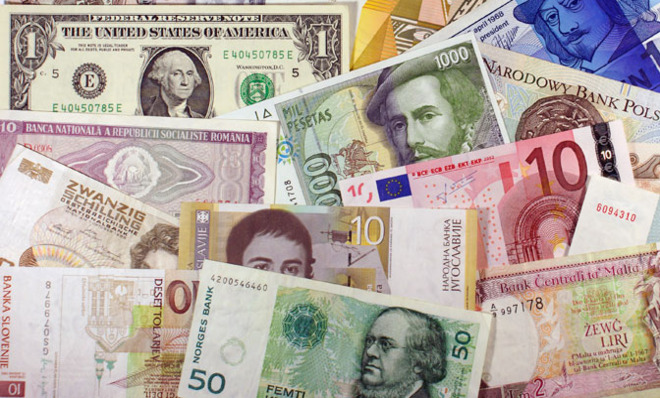The U.S. dollar has been strengthening for 3 straight years! (That's not good news.)
Has the dollar grown too strong?

After listening to naysayers and inflation hawks intone for years that the Federal Reserve's monetary policy would weaken the dollar and spike inflation, it's perversely gratifying to see that — even after all that money printing — the dollar has strengthened over the last three years:

(Federal Reserve Bank of St. Louis)
The dollar has been on a particular tear in the last few weeks. This is the ninth straight week where the dollar index has increased on the back of various geopolitical turmoils — from the ongoing crisis in the Ukraine and the expansion of ISIS in the Middle East to the continuing Eurozone depression and the upcoming referendum on Scottish independence from Britain. As Catherine Evans of Reuters notes, that's the longest streak of weekly gains since 1997.
The Week
Escape your echo chamber. Get the facts behind the news, plus analysis from multiple perspectives.

Sign up for The Week's Free Newsletters
From our morning news briefing to a weekly Good News Newsletter, get the best of The Week delivered directly to your inbox.
From our morning news briefing to a weekly Good News Newsletter, get the best of The Week delivered directly to your inbox.
Compared to all that geopolitical turmoil, the United States — with its moderately growing economy and relatively lower unemployment — looks like an oasis of calm and prosperity. Money from around the world is flowing into U.S. dollars and dollar-denominated investments.
But is that actually good news?
Since the tenure of Robert E. Rubin as Treasury secretary in the 1990s, the U.S. has at least nominally pursued a "strong dollar policy" to encourage such investment and discourage U.S. Treasury yields and other interest rates from rising too high.
Of course, the words "strong dollar" have a certain patriotic emotional resonance that isn't lost on politicians. As Ezra Klein colorfully put it in The Washington Post in 2011:
A free daily email with the biggest news stories of the day – and the best features from TheWeek.com
When its value goes up, we call it a "strong dollar." And a "strong dollar" sounds great! It sounds like a strong America, like Old Glory waving in the breeze, like our soldiers planting the flag at Iwo Jima. As for the "weak dollar," well, yech. That's American decline, compact cars, the Vietnam War. We might as well say "awesome dollar" and "America-hater dollar." [The Washington Post]
But what a strengthening dollar really means is that a dollar can buy more of another country's currency. And other currencies don't get as many dollars in return. That means Americans can buy more of the world's goods, but will probably sell less of their own goods abroad. (More imports and fewer exports, in other words.) It also means lower inflation — or even deflation — as the cost of imports falls.
Now, sometimes cheaper imports and less inflation are a good thing. That's the case when inflation is high, like during the late '70s and early '80s. But is it really the right condition for the present economy? True, the U.S. has had a much better recovery than Europe, Japan, and the U.K., but the U.S. is still significantly below its long-term trend. As former White House chief economist and current professor at U.C. Berkeley Christina Romer pointed out in The New York Times back in 2011, there are reasons to believe a weaker dollar might be better:
A weaker dollar means that our goods are cheaper relative to foreign goods. That stimulates our exports and reduces our imports. Higher net exports raise domestic production and employment. Foreign goods are more expensive, but more Americans are working. Given the desperate need for jobs, on net we are almost surely better off with a weaker dollar for a while. [The New York Times]
There's another important factor, too. The U.S. public still has a lot of debt. Total debt, including government debt, personal debt, and business debt, is valued at 347 percent of GDP. That's down from its 374 percent peak after the financial crisis, but it's still significantly more than it was in the 70s, 80s, or 90s.
Now, in theory, a strong dollar should help the U.S. government pay its debt by keeping Treasury yields low. But in practice there is little correlation between the strength of the dollar and U.S. borrowing costs. The dollar was much stronger in the 1990s than it is today, for instance, but borrowing costs were higher. And a strong dollar also doesn't do much for individual American debtors, who, in net, are the poorest people in society. It can even harm them if a strong dollar leads to price deflation, which would raise the value of debts relative to falling prices and incomes. Conversely, if the U.S. maintains moderate inflation, Americans' debt load is kept serviceable and sustainable.
Now, as I mentioned, officially the exchange rate is the purview of the U.S. Treasury and its "strong dollar" policy. But the strengthening dollar should concern the Fed, too. A strengthening dollar indicates downward inflationary pressure. And with inflation already below the Federal Reserve's 2 percent target — and the quantitative easing stimulus programs expected to end in October — that could spell deflationary trouble.
John Aziz is the economics and business correspondent at TheWeek.com. He is also an associate editor at Pieria.co.uk. Previously his work has appeared on Business Insider, Zero Hedge, and Noahpinion.

